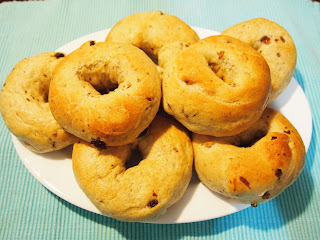I have recently discovered that Home Depot and Lowe's offer free kids' workshops!
Home Depot offers free workshops on the first Saturday of every month (Here for more information.).
Lowe's also offers free workshops about twice a month (Here for more information.).
I have been to the Home Depot workshops three times, and only once to Lowe's. They have a few differences which I will share.
Home Depot supplies aprons and refreshments, which varies but usually includes Capri-sun, water, popcorn, and granola bars. Their projects are a bit simpler than Lowe's but still takes time and effort, and my kids love the end-results.
Below are pictures of some of the projects we have brought home from Home Depot.
The first project is a take-home mini-garden. First we built the plant holders using a hammer and nails (younger kids will need parental assistance). Then the kids painted them. Finally, each child could pick two different potted plants (There were three different kinds to choose from: Marigold, Polka dots, and Snap dragon.).
The second project was a lawnmower pencil holder. First we built it using a hammer, nails, and glue. Then the kids painted them.

The third project was a bit more complicated: a car sponsored by Despicable Me 2. First we built the car using hammer, nails, and glue. Then the kids painted them and put stickers on once the paint had dried.
Lowe's supplies aprons but did not offer any refreshments the one time we participated in their workshop. However, their projects are more appealing (in my opinion) than the ones that Home Depot offers.
Here is a picture of the project from Lowe's:
It is a treasure chest sponsored by Monsters University. First, we built it using a hammer and nails. Then the kids put the stickers on. They were excited to put things inside the treasure chest. Although they didn't offer any refreshments or even paint, we spent more time building this treasure chest than on any project we did at Home Depot.
Overall, I like the projects that they offer at Lowe's. However, Lowe's requires an online reservation, and the spots fill up very quickly. In addition, they don't say what the dates are to sign up. You just have to keep checking their website. As a result, we haven't been able to attend their workshops on occasion because their workshops are already full!
Overall, I like the projects that they offer at Lowe's. However, Lowe's requires an online reservation, and the spots fill up very quickly. In addition, they don't say what the dates are to sign up. You just have to keep checking their website. As a result, we haven't been able to attend their workshops on occasion because their workshops are already full!
Home Depot's projects are simpler, but the kids still really enjoy them. They have a more relaxed atmosphere - offering refreshments, balloons, and you don't have to sign up before-hand.
Both Home Depot and Lowe's are great learning opportunities for kids to build projects. My family and I really enjoy these free workshops!




















